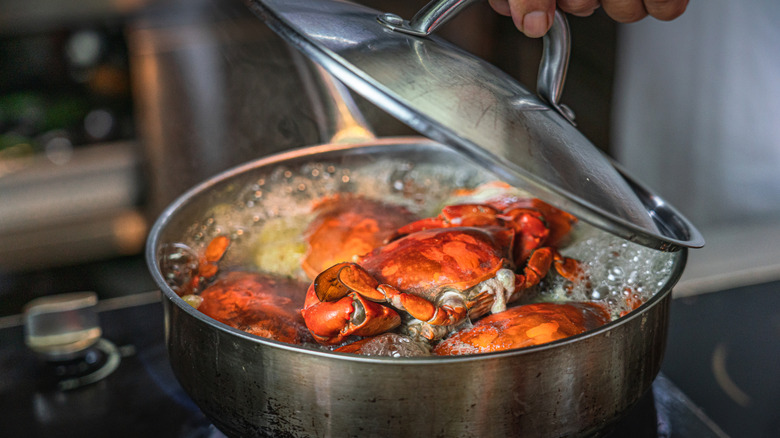Before Buying Lobster Don't Forget To Check For This Red Flag
Walking into a fish market or grocery store's seafood section can feel like stepping into uncharted waters. The array of options looks enticing, but when it comes to lobster, one of the biggest red flags when buying seafood is simple: a dead lobster. Once a lobster is gone, its meat starts to lose structure fast, turning soft and unappealing instead of staying sweet and firm. And if that lobster is dead, it almost always points to it being frozen, which dulls the flavor even further.
That doesn't mean every lobster casualty is automatically a lost cause. Shipping live animals is fragile work, and losses occasionally happen in transit. The key is temperature. If the lobster arrives cool and fresh, it can still be safe to cook — but the eating experience won't match what you'd get from a live catch.
For buyers, the takeaway is clear: freshness isn't just a nice-to-have, it's the line between a memorable meal and a disappointing one. The real question becomes how to tell whether your lobster is still in peak condition — and what to do if it's not.
Signs your lobster has checked out
Knowing the warning signs can save you from bringing home a bad lobster. The easiest giveaway is how it looks and feels. Pick up a healthy lobster and you'll feel it fight back — the tail tucks sharply under the body and the claws stay tight. If the tail doesn't spring back, the claws feel weak, or the eyes look cloudy, you're likely holding a lobster that didn't make it. Discoloration on the shell or an unpleasant odor is an even clearer cue that it's time to pass. Keep dead lobsters separate. Once one goes bad, it can drag the others down with it. That's because the body releases ammonia, which is toxic to the crustaceans.
Freshness also dictates how you prepare the shellfish. Ideally, the best way to kill a lobster is while it's still alive. Doing so ensures you're getting both safety and quality on the plate. While refrigeration can buy you a few extra hours after death, the taste will already be in decline, and bacteria begin multiplying fast. Cooking a dead lobster requires slightly higher internal temperatures — 145 degrees F instead of 135 — to reduce the risk of foodborne illness.
If you've got a healthy lobster in hand, the reward is worth it. Cook it right, and you can crack lobster claws for the most meat without worrying about quality or safety. That's the difference between a dinner that feels like a splurge and one that leaves you second-guessing your purchase. When it comes to lobster, paying attention to the details pays you back in every bite.

